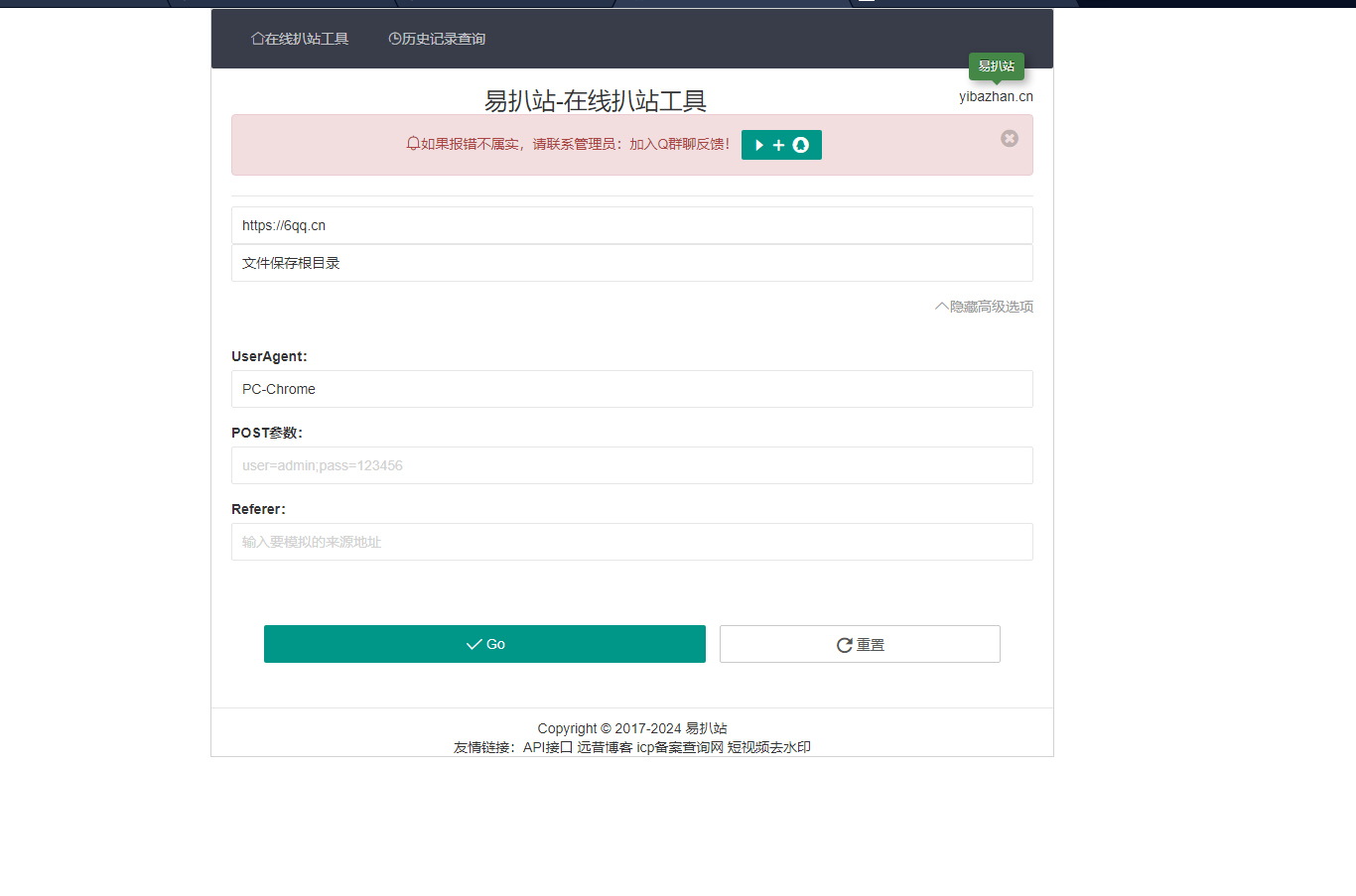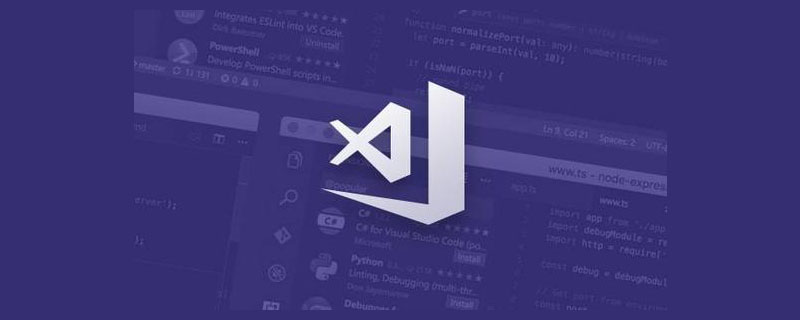本篇文章給大家帶來了關于laravel的相關知識,其中主要介紹了swagger使用的相關問題,下面一起來看一看基于laravel 生成swagger 為例子,希望對大家有幫助。

【相關推薦:laravel】
swagger太辣雞了?
本教程是基于laravel 生成swagger 為例子,其實這個東西和語言或者和框架基本沒啥區別,因為都是用的公用的JSon ,通過程序掃描swagger預先規定的“語言”,生成結構存入json中,通過 swagger ui 展現出來(或者自己開發)。
對于php開發人員來說,有大部分同學很不喜歡swagger。 因為這個看上去寫起來好麻煩啊,一想到分分鐘用php寫完的代碼,寫swagger要寫10分鐘,心里就抵觸這個東西。
身邊有Java開發的同學就知道他們很大一部分都用swagger,因為java要維護數據結構,而且swagger在java整合得更靈活。
這個時候java如果看到有php 說swagger反人類的東西,太麻煩了,上古時代的產物。那身邊的java朋友會心里竊喜,這么好用的東西都不用,還說php是世界上最好的語言。
我為啥用swagger
最近在寫自動生成代碼,其實現在Laravel 很多自動生成CURD的。比如像laravel-admin ,一條命令生成CURD,但是生成之后,數據看上去很冷。 比如有一些字段不需要顯示,有一些是要select關聯枚舉的,有一些是 hasMany的,還有 overtrue(正超)的api腳手架也挺好的
所以swaager也可以根據業務需求寫自動化生成
L5-Swagger
https://github.com/DarkaOnLine/L5-Swagger
安裝:
composer require "darkaonline/l5-swagger"
使用:
php artisan vendor:publish --provider "L5SwaggerL5SwaggerServiceProvider" php artisan l5-swagger:generate
填寫下面例子生成之后再訪問
/api/documentation
@OAInfo 為必須
例子
/** * @OAInfo( * version="1.0.0", * title="L5 OpenApi", * description="L5 Swagger OpenApi description", * @OAContact( * email="darius@matulionis.lt" * ), * @OALicense( * name="Apache 2.0", * url="http://www.apache.org/licenses/LICENSE-2.0.html" * ) * ) */
get 請求
如果要匹配path中的數值則 in path 查詢 in query
/** * @OAGet( * path="/projects/{id}", * operationId="getProjectById", * tags={"Projects"}, * summary="Get project information", * description="Returns project data", * @OAParameter( * name="id", * description="Project id", * required=true, * in="path", * @OASchema( * type="integer" * ) * ), * @OAResponse( * response=200, * description="successful operation" * ), * @OAResponse(response=400, description="Bad request"), * @OAResponse(response=404, description="Resource Not Found"), * security={ * { * "oauth2_security_example": {"write:projects", "read:projects"} * } * }, * ) */
POST 請求
/** * @OAPost( * path="/api/test/store", * operationId="api/test/store", * tags={"Test"}, * summary="Test創建", * description="Test提交創建", * @OAParameter( * name="id", * description="", * required=false, * in="query", * ), * @OAResponse( * response=200, * description="successful operation", * @OAJsonContent( * ref="#/components/schemas/Test" * ) * ), * @OAResponse(response=400, description="Bad request"), * @OAResponse(response=404, description="Resource Not Found"), * security={ * { * "api_key":{} * } * }, * ) */
文件上傳參數
* @OARequestBody( * @OAMediaType( * mediaType="multipart/form-data", * @OASchema( * type="object", * @OAProperty( * property="file", * type="file", * ), * ), * ) * ),
傳入為枚舉
* @OAParameter( * name="status", * in="query", * description="狀態", * required=true, * explode=true, * @OASchema( * type="array", * default="available", * @OAItems( * type="string", * enum = {"available", "pending", "sold"}, * ) * ) * ),
Body 為Json 方式提交
* @OARequestBody( * @OAMediaType( * mediaType="application/json", * @OASchema( * @OAProperty( * property="id", * type="string" * ), * @OAProperty( * property="name", * type="string" * ), * example={"id": 10, "name": "Jessica Smith"} * ) * ) * ),

使用結構Schema作為請求參數
* @OARequestBody( * description="order placed for purchasing th pet", * required=true, * @OAJsonContent(ref="#/components/schemas/UserModel") * ),
Schema的使用
/** * @OASchema( * schema="UserModel", * required={"username", "age"}, * @OAProperty( * property="username", * format="string", * description="用戶名稱", * example="小廖", * ), * @OAProperty( * property="age", * format="int", * description="年齡", * example=1, * nullable=true, * ) * ) */
枚舉
一個枚舉單獨創建一個Schema
/** * @OASchema( * schema="product_status", * type="string", * description="The status of a product", * enum={"available", "discontinued"}, * default="available" * ) */
映射到模型中的具體字段
* @OAProperty( * property="status", * ref="#/components/schemas/product_status" * ),
這樣前端開發者就可以
關聯模型
和枚舉差不多,通過一個Property關聯模型
* @OAProperty( * property="user_detail", * ref="#/components/schemas/UserModel2" * ),
關聯模型和枚舉,可以自動生成請求的參數和,返回的結構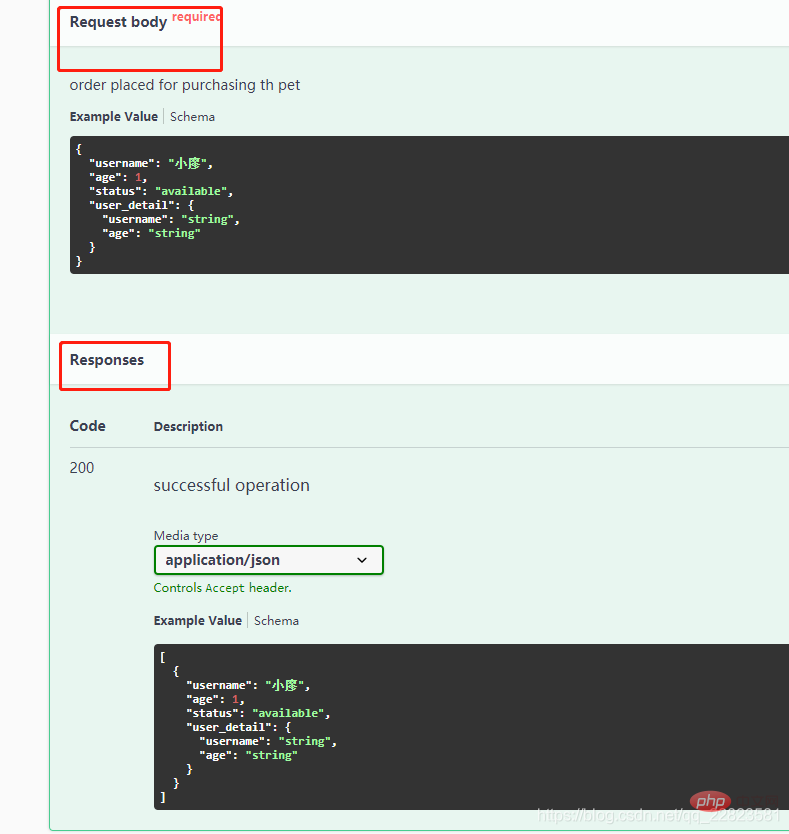
返回為模型結構
* @OAResponse( * response=200, * description="successful operation", * @OAJsonContent( * type="array", * @OAItems(ref="#/components/schemas/UserModel"), * @OAItems(ref="#/components/schemas/UserModel2") * ) * ),
就比如那天前端小妹跟你說,哥哥,支付狀態3代表什么,可能你很快的說出了是某某狀態,但是問你11是啥狀態,人都要沙雕了。
通過swagger 的Schema 能讓前端人員摸清后端的結構信息,比如:
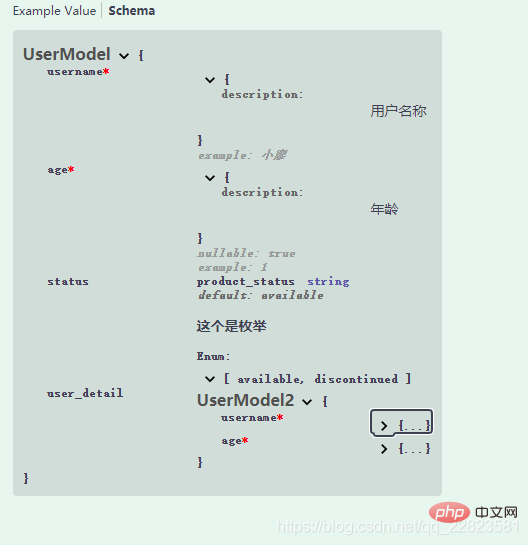
各位,這些都可以自動化編程,自動生成的,工作效率不要太爽
多個合并Schema
/** * @OASchema( * schema="UserModel", * allOf={ * @OASchema(ref="#/components/schemas/UserModel2"), * @OASchema( * type="object", * description="Represents an authenticated user", * required={ * "email", * "role", * }, * additionalProperties=false, * @OAProperty( * property="email", * type="string", * example="user@example.com", * nullable=true, * ), * ) * } * ) */
驗證提供outh2 和apikey 兩種方式,在存放全局配置中寫入(也可以任意目錄中)
/** * @OASecurityScheme( * type="apiKey", * in="query", * securityScheme="api_key", * name="api_key" * ) */
在接口中添加
security={{"api_key": {}}},
這時,swagger Ui 會出現一個鎖一樣的東西
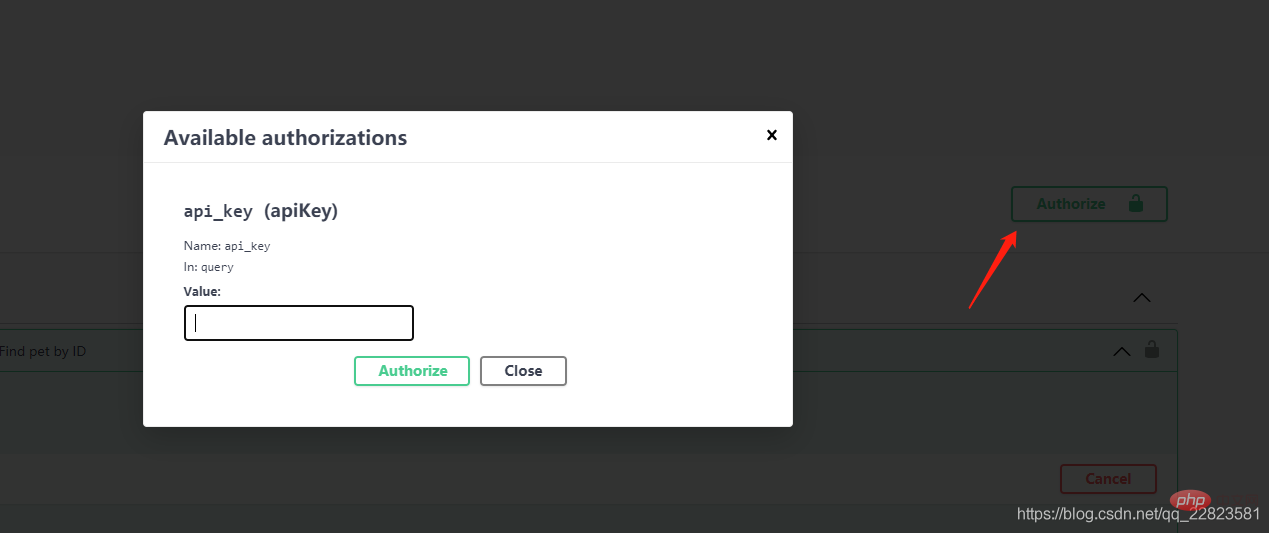
可以輸入自己的Token,請求的時候會帶上token

可以結合 Laravel 的自帶token驗證,可以參考之前寫的文章 Laravel guard 菊花守衛者
更多使用方法可以查看官網例子: https://github.com/zircote/swagger-php/tree/master/Examples/petstore-3.0
可能遇到的問題
線上環境如果訪問不了,可能是你nginx 配置的問題,因為,laravel-swagger 是通過file_content_get() 的方式 echo 輸出js 的。而你的nginx 配置判斷,如果是 .js 或者css 是靜態文件,所以到不了index.php ,更執行不了 file_content_get 函數了。可以參考nginx 配置:
charset utf-8; client_max_body_size 128M; location / { try_files $uri $uri/ /index.php$is_args$args; } location ~ .php$ { include fastcgi_params; fastcgi_param SCRIPT_FILENAME $document_root$fastcgi_script_name; fastcgi_pass php74:9000 這個換成你自己的; try_files $uri =404; }
【相關推薦:laravel】









